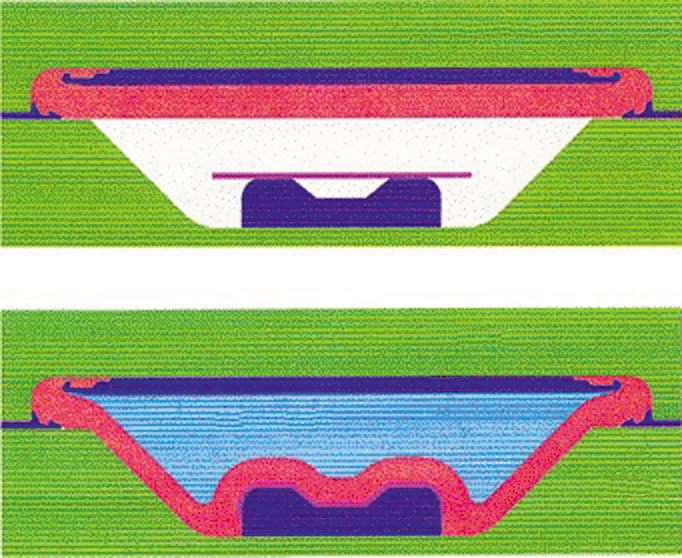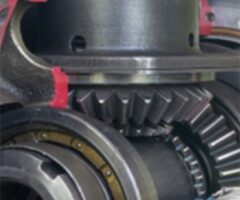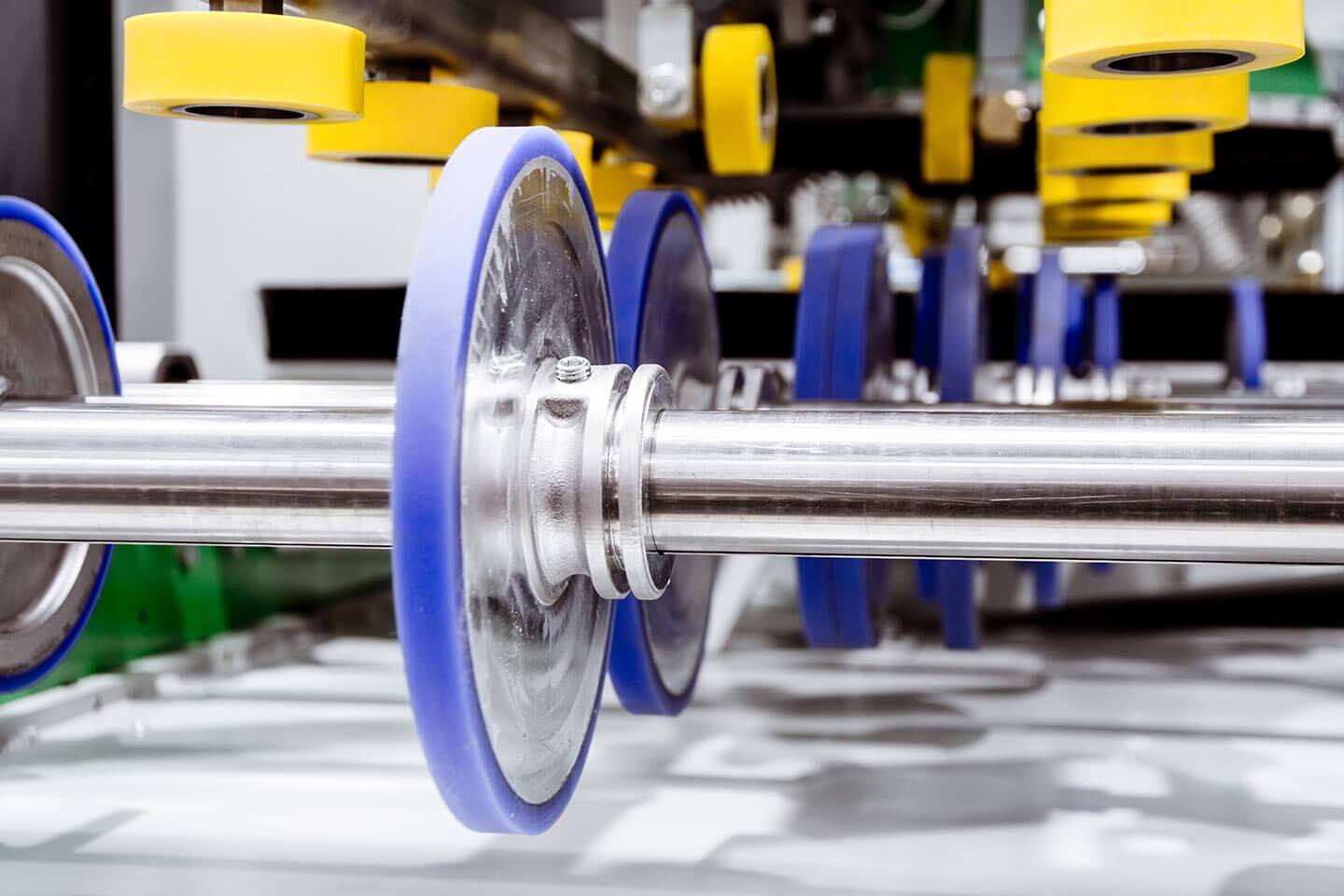
Fluid Cell Metal Forming Explained
Fluid cells are an integral part of forming complex metal parts, primarily for the automotive and aerospace industries. To understand what exactly a fluid cell is and what it does, the clearest explanation we can offer is that of the metal forming process in which fluid cells are used: sheet hydroforming. In this process, a hydraulic press which houses a fluid cell shapes a metal sheet into a finished net part with the help of just a single, stationary tool.
The fluid cell itself consists of an elastomeric sheet fixed to the upper cylinder of a hydraulic press, directly beneath where the hydraulic fluid is stored. The bed of the press houses a stationary tool onto which a sheet of metal is applied for forming. The tool and metal blank are placed in a sunken down portion of the bed so that the fluid cell’s contact with the blank is delayed.
The press comes down onto the bed, surrounding the workpiece but not yet touching it. Once the press is in position, the fluid cell begins to fill with hydraulic fluid. As the cell is filled, pressure builds up and causes the elastomeric sheet to expand- almost like blowing up a balloon. The sheet expands and eventually makes contact with the metal blank. It exerts an even amount of pressure to the sheet which presses it against the shaping tool. As the elastomeric sheet flexes, it applies an evenly distributed force that is perpendicular to the surface of the work piece at every single point of contact. This forms the metal to the shape of the die, and greatly reduces the thinning of the sheet at points where it is shaped against the tool. Finally, the press is lifted to reveal a finished net part that has been evenly molded to the forming tool’s shape.
This method is commonly used when forming high strength metal sheets into complex shapes including those with bends and curves. It can sometimes also be used for forming composite materials or exotic metals. A unique advantage of this type of metal forming is that multiple parts can be formed simultaneously, so long as there is sufficient space and tooling to do so.

Does your metal forming facility produce sheet hydroformed parts?
Consider upgrading your hydraulic press with a polyurethane pad today!
Contact Us
Advantages of Urethane Fluid Cells
As you may have noticed, we didn’t use the word “urethane” or “polyurethane” at all in the previous paragraph. This is because some sheet hydroforming presses still utilize other elastomers in their presses, like rubber for example. However, in this application- like many others- urethane proves to be the best choice for optimal performance and quality control.
At PSI Urethanes we provide our customers with the highest quality urethanes for maximum performance in your fluid cell hydroforming applications. Compared to other elastomers, urethane performs better for longer.
As a highly flexible material, urethane can withstand the high pressures of fluid cell forming better than any other elastomer. This superior flexibility and its unique shape memory make urethane a long-lasting solution for use in hydroforming presses. The longevity of polyurethane pads proves useful over time as the need for pad replacement and machine maintenance is significantly reduced, resulting in maintenance cost savings.
It also facilitates a more even distribution of force from the hydraulic fluid onto the metal blank, which can improve part quality overall. As urethane diaphragms can flex time and time again without sustaining significant wear, consistently high quality pieces can be replicated with great precision even between multiple production runs.
Another advantage of using polyurethane fluid cells is that urethane is a non-marring material. Where rubber and other elastomers will leave marks on metal parts, using urethane ensures that your metal part will remain free of marks and residue. By producing net parts with a clean, smooth surface, urethane fluid cells nearly eliminate any need for finishing operations like sanding or machining. Parts produced by rubber pad forming, on the other hand, typically require significant secondary finishing operations before being ready to leave the shop floor.
Although polyurethanes make for an excellent fluid cell material, they can also serve other purposes in sheet hydroforming. Urethane throw pads can reduce wear on both tooling and hydraulic press components alike. Polyurethane liners can be custom formulated for intense grip to keep your tooling in place during the sheet hydroforming process as well.
Here at PSI Urethanes, we offer custom urethane formulations to ensure that our product is ideal for your specific application. We have plenty of experience in serving the metal forming industry and custom formulating polyurethane products for forming presses. We work exclusively with thermoset urethanes, which are known to be more robust and return to their original shape even after exposure to high pressure applications. If there are certain features of urethane that you want to see highlighted in your own custom formulation, like tensile strength or flexibility, we can make it happen. We can even customize our product down to the last detail with our ability to formulate custom colors and durometers.
We welcome the opportunity to take on your most challenging needs with our urethane manufacturing capabilities. If you’re ready to upgrade your sheet hydroforming process to deliver unmatched part quality, reach out to PSI Urethanes today to speak with our urethane experts about finding the right custom fit for your needs.
PSI Urethanes delivers fluid cell diaphragms with quality that you can rely on for your toughest applications.
Contact us today to start developing your own custom polyurethane pads for sheet hydroforming.
Contact Us
About PSI Urethanes
Since 1966, through our own independent research and activity in the Polyurethane Manufacturers Association, PSI Urethanes has stayed on the leading edge of urethane technology – including developing advances in new materials, comprehensive designs, and processing technologies. Today we are among the most respected and trusted suppliers of custom polyurethane products.
We operate from our 45,000-square-foot manufacturing facility in Austin, Texas, which houses an extensive stock of polyurethane products. Our fully equipped manufacturing facility includes a versatile range of processing machinery, which allows us to work on unique, one-of-a-kind projects, as well as high volume components. Our in-house engineering, tooling, and custom mold shop, produces custom and stock production orders with exceptionally fast turn-around times. From conception to prototyping, to final production runs, our technical representatives and design engineers will work closely with your staff to meet your critical tolerances and specifications. You are guaranteed to receive experienced, professional, and personalized service from the first contact through your on-time delivery, with complete confidentiality and dedication to protecting your good name.

